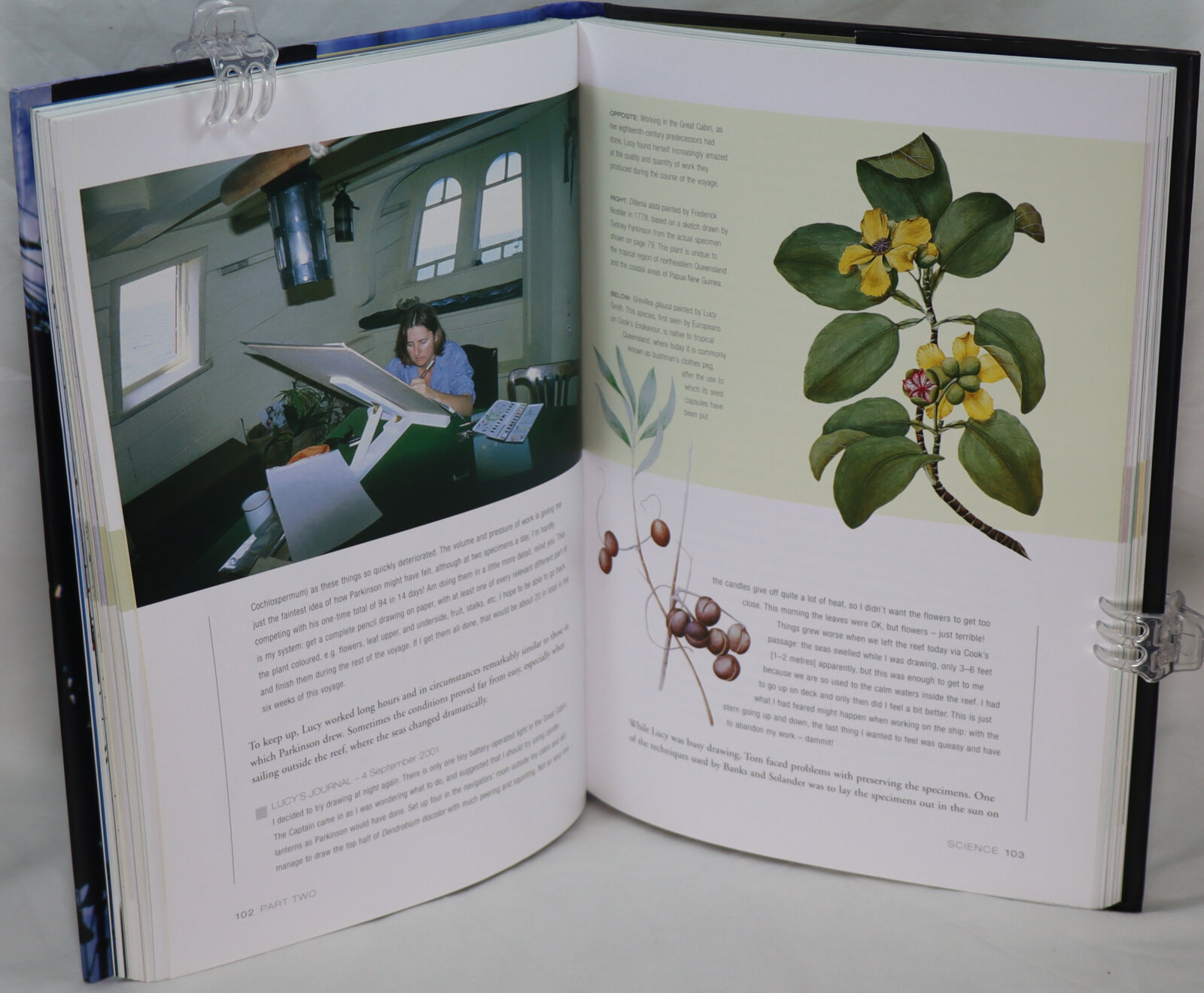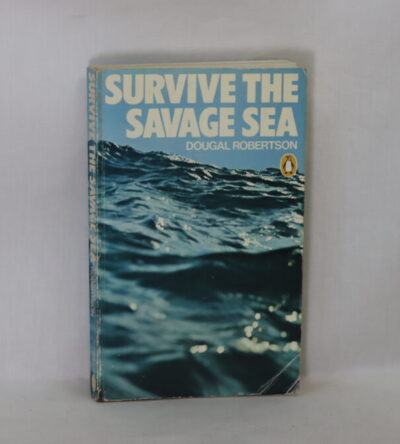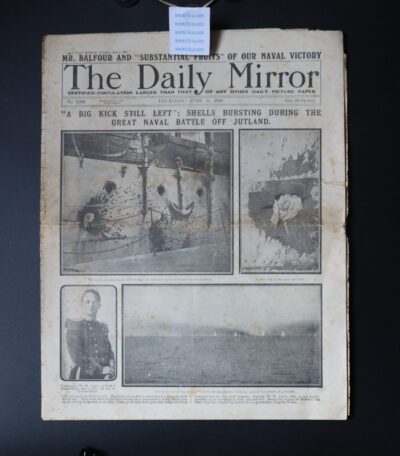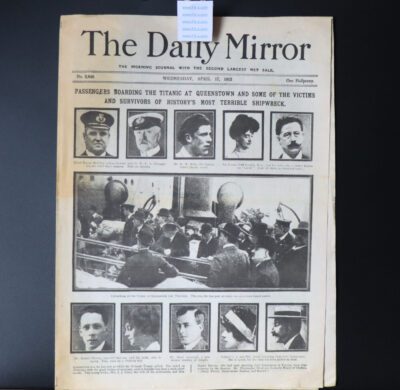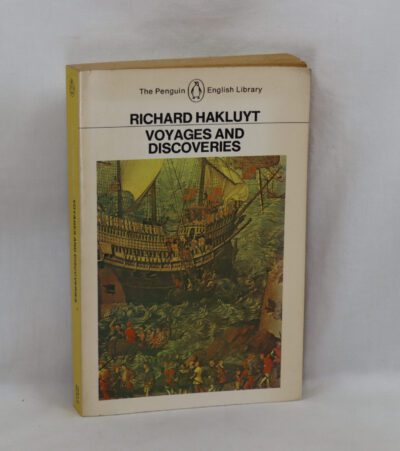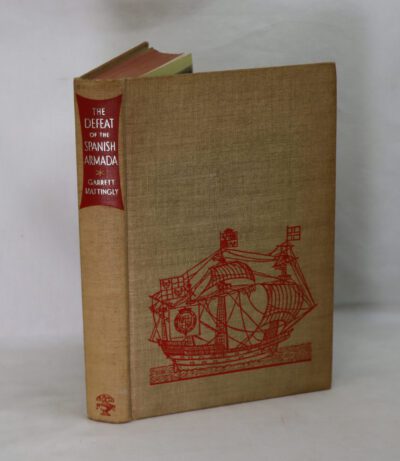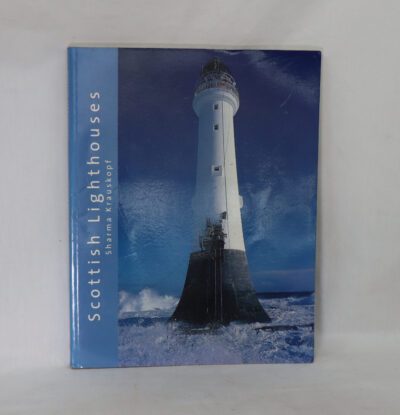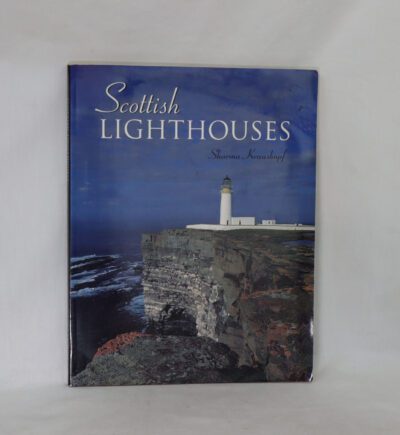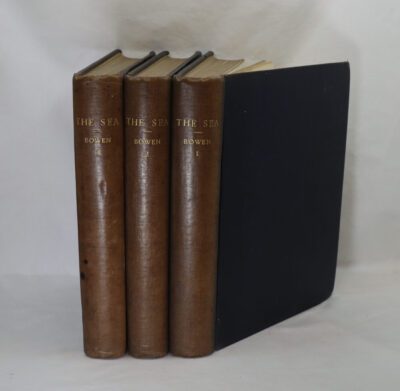The Ship. Retracing Cook's Endeavour Voyage.
By Simon Baker
ISBN: 9781592580040
Printed: 2002
Publisher: BBC Books. London
| Dimensions | 20 × 28 × 3 cm |
|---|---|
| Language |
Language: English
Size (cminches): 20 x 28 x 3
Condition: Fine (See explanation of ratings)
Your items
Item information
Description
In the original dustsheet. Binding the same as the dustsheet.
-
F.B.A. provides an in-depth photographic presentation of this item to stimulate your feeling and touch. More traditional book descriptions are immediately available.
First there was Blue Latitudes, now there is The Ship, which tells the remarkable story of Captain James Cook’s voyage on the Endeavour, describing what happened when a team of volunteers boarded a magnificent replica of the ship to retrace a dramatic stretch of its route from Cape Grafton in Australia to Jakarta in Indonesia. Simon Baker, author and seaman, begins by taking a fresh look at Cook and the origins of his first voyage – how it turned from a scientific expedition to observe an eclipse into a far-reaching quest for the Great Southern Continent. Drawing on original journals, he re-examines Cook’s motives and reputation, revealing a more complex character than the hero that history has handed down to us. The replica Endeavour provided a unique opportunity to ‘test’ the achievements of Cook and his company within an authentic 18th-century environment. This involved living on the same diet as Cook and his men, hauling ropes, scrubbing decks, and cleaning cabins. The specialists on board – historians, navigators, a botanist and an artist – replicated the work of their 18th-century counterparts and came to fascinating conclusions about their contributions to science, and navigation.
The Ship features:
-
Spectacular photographs of the replica ship and the places it visited on the voyage.
-
Journal entries from eighteenth- and twenty-first century participants, giving a dual perspective on the innovative voyage.
-
Historic maps and charts drawn by Captain Cook and other early explorers.
-
Original drawings of plants and people by artists past and present who traveled on the Endeavour
HMS Endeavour off the coast of New Holland by Samuel Atkins c. 1794
HMS Endeavour was a British Royal Navy research vessel that Lieutenant James Cook commanded to Tahiti, New Zealand and Australia on his first voyage of discovery from 1768 to 1771.
She was launched in 1764 as the collier Earl of Pembroke, with the Navy purchasing her in 1768 for a scientific mission to the Pacific Ocean and to explore the seas for the surmised Terra Australis Incognita or “unknown southern land”. Commissioned as His Majesty’s Bark Endeavour, she departed Plymouth in August 1768, rounded Cape Horn and reached Tahiti in time to observe the 1769 transit of Venus across the Sun. She then set sail into the largely uncharted ocean to the south, stopping at the islands of Huahine, Bora Bora, and Raiatea west of Tahiti to allow Cook to claim them for Great Britain. In September 1769, she anchored off New Zealand, becoming the first European vessel to reach the islands since Abel Tasman’s Heemskerck 127 years earlier.
In April 1770, Endeavour became the first European ship to reach the east coast of Australia, with Cook going ashore at what is now known as Botany Bay. Endeavour then sailed north along the Australian coast. She narrowly avoided disaster after running aground on the Great Barrier Reef, and Cook had to throw her guns overboard to lighten her. Endeavour was beached on the Australian mainland for seven weeks to permit rudimentary repairs to her hull. Resuming her voyage, she limped into port in Batavia in October 1770, her crew sworn to secrecy about the lands that they had visited. From Batavia Endeavour continued westward, rounded the Cape of Good Hope on 13 March 1771 and reached the English port of Dover on 12 July, having been at sea for nearly three years.
The ship was largely forgotten after her Pacific voyage, spending the next three years hauling troops and cargo to and from the Falkland Islands. She was renamed in 1775 after being sold into private hands, and used to transport timber from the Baltic. Rehired as a British troop transport during the American War of Independence, she was finally scuttled in a blockade of Narragansett Bay, Rhode Island in 1778. Historical evidence indicates the ship was sunk just north of Goat Island in Newport Harbor, along with four other British transports.
Relics from Endeavour are displayed at maritime museums worldwide, including an anchor and six of her cannon. A replica of Endeavour was launched in 1994 and is berthed alongside the Australian National Maritime Museum in Sydney Harbour. The NASA Space Shuttle Endeavour was named after this ship, as was the command module of Apollo 15, which took a small piece of wood from Cook’s ship into space, and the SpaceX Crew Dragon capsule C206 was christened Endeavour during Demo-2. The ship is also depicted on the New Zealand fifty-cent coin.
Earl of Pembroke, later HMS Endeavour, leaving Whitby Harbour in 1768. By Thomas Luny, dated 1790.
Construction – Endeavour was originally the merchant collier Earl of Pembroke, built by Thomas Fishburn for Thomas Millner, launched in June 1764 from the coal and whaling Port of Whitby in the North Riding of Yorkshire. She was a type known locally as the ‘Whitby Cat’. She was ship-rigged and sturdily built with a broad, flat bow, a square stern, and a long box-like body with a deep hold. A flat-bottomed design made her well-suited to sailing in shallow waters and allowed her to be beached for loading and unloading of cargo and for basic repairs without requiring a dry dock. Her hull, internal floors, and futtocks were built from traditional white oak, her keel and stern post from elm, and her masts from pine and fir. Plans of the ship also show a double keelson to lock the keel, floors and frames in place. There is uncertainty about the height of her standing masts, as surviving diagrams of Endeavour depict the body of the vessel only, and not the mast plan. While her main and foremast standing spars were standard for her shipyard and era, an annotation on one surviving ship plan in the National Maritime Museum in Greenwich has the mizzen as “16 yards 29 inches” (15.4 m). If correct, this would produce an oddly truncated mast a full 9 feet (2.7 m) shorter than the naval standards of the day. Late twentieth-century research suggests the annotation may be a transcription error with “19 yards 29 inches” (18.1 m) being the true reading. If so, this would more closely conform with both naval standards and the lengths of the other masts.
Purchase and refit by the Admiralty. On 16 February 1768, the Royal Society petitioned King George III to finance a scientific expedition to the Pacific to study and observe the 1769 transit of Venus across the sun. Royal approval was granted for the expedition, and the Admiralty elected to combine the scientific voyage with a confidential mission to search the south Pacific for signs of the postulated continent Terra Australis Incognita (or “unknown southern land”). The Royal Society suggested command be given to Scottish geographer Alexander Dalrymple, whose acceptance was conditional on a brevet commission as a captain in the Royal Navy. First Lord of the Admiralty Edward Hawke refused, going so far as to say he would rather cut off his right hand than give command of a navy vessel to someone not educated as a seaman. In refusing Dalrymple’s command, Hawke was influenced by previous insubordination aboard the sloop HMS Paramour in 1698, when naval officers had refused to take orders from civilian commander Dr. Edmond Halley. The impasse was broken when the Admiralty proposed James Cook, a naval officer with a background in mathematics and cartography. Acceptable to both parties, Cook was promoted to Lieutenant and named as commander of the expedition.
Want to know more about this item?

Related products
Share this Page with a friend


